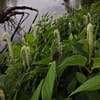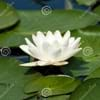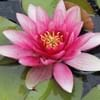Life Span
Perennial
Perennial
Origin
World/Pandemic, North America, Caribbean, Europe, Northern Africa, Asia
Asia, Europe
Types
Not Available
Elfin Thyme, Pink Chintz Thyme, Lime Thyme, White Moss Thyme, Lavender Thyme, Silver Needle Thyme
Number of Varieties
Not Available
Habitat
Boggy areas, Near ponds
Rocky areas
USDA Hardiness Zone
2-12
6-9
Sunset Zone
21,22
1a, 1b, 2a, 2b, 3a, 3b, 4, 5, 6, 7, 8, 9, 10, 11, 12, 13, 14, 15, 16, 17, 18, 19, 20, 21, 22, 23, 24
Habit
Clump-Forming
Cushion/Mound-forming
Minimum Width
Not Available
Flower Color
Sienna, Chocolate
Crimson, Lavender, Pink, White
Flower Color Modifier
Not Available
Unknown
Fruit Color
Not Available
Not Available
Leaf Color in Spring
Green
Green
Leaf Color in Summer
Green
Gray Green
Leaf Color in Fall
Not Available
Gray Green
Leaf Color in Winter
Green
Gray Green
Leaf Shape
Grass like
Tiny
Plant Season
Summer, Fall
Summer
Sunlight
Full Sun, Partial Sun
Full Sun, Part sun
Type of Soil
Loam, Sand
Loamy, Sandy
The pH of Soil
Acidic, Neutral, Alkaline
Neutral, Slightly Alkaline
Soil Drainage
Poorly Drained
Well drained
Bloom Time
Summer
Fall, Spring, Summer, Winter
Tolerances
Wet Site
Drought
Where to Plant?
Container, Ground
Container, Ground
How to Plant?
Divison, Seedlings
Seedlings, Stem Planting
Plant Maintenance
Medium
Medium
Watering Requirements
Does not require regular watering, Water Deeply
Do not water frequently, Does not require lot of watering, Requires watering in the growing season, Water occasionally
In Summer
Lots of watering
Lots of watering
In Spring
Moderate
Moderate
In Winter
Average Water
Average Water
Soil pH
Acidic, Neutral, Alkaline
Neutral, Slightly Alkaline
Soil Type
Loam, Sand
Loamy, Sandy
Soil Drainage Capacity
Poorly Drained
Well drained
Sun Exposure
Full Sun, Partial Sun
Full Sun, Part sun
Pruning
Cut limbs, Remove damaged leaves, Remove dead branches, Remove dead leaves, Remove dead or diseased plant parts
Prune for shortening long shoots, Prune if you want to improve plant shape, Prune lower leaves, Requires extensive pruning
Fertilizers
All-Purpose Liquid Fertilizer, Apply 5-10-5 amounts, Apply N-P-K
All-Purpose Liquid Fertilizer
Pests and Diseases
Red blotch
Alternaria leaf blight, Aphids, Botrytis collar rot, Rhizoctonia Root Rot, Spider mites
Plant Tolerance
Wet Site
Drought
Flower Petal Number
Not Available
Not Available
Edible Fruit
Not Available
No
Fragrant Bark/Stem
No
Yes
Foliage Texture
Coarse
Fine
Foliage Sheen
Matte
Matte
Attracts
Birds
Butterflies
Allergy
Skin rash
Diarrhea, Skin irritation
Aesthetic Uses
Ground Cover, Showy Purposes
Beautification, Showy Purposes, Used for decorating walls, fences, gates, hedges, etc.
Beauty Benefits
Not Available
Not Available
Environmental Uses
Air purification, soil stabilisation
Air purification
Medicinal Uses
anticoagulant, Astringent, Burns, Diuretic, Emmenagogue, Galactogogue, Haemostatic, Miscellany, Refrigerant, Sedative, Tonic, Vulnerary
Arthritis, Bronchitis, Chronic fatigue, Cough, Gastritis, Hair Loss, Insomnia, Kidney problems, Muscle Pain, Skin irritation, Snoring, Sore throat, Stomach pain, Swelling
Part of Plant Used
Flowers, Leaves, Root, Seeds, Stem
Whole plant
Other Uses
Fibre, For making oil, used for weaving hats, Used in biomass, Used in paper industry, Weaving into Mats and Bags
Air freshner, Cosmetics, Economic Purpose, Employed in herbal medicine, Oil is used in perfume, soaps, creams, etc., Showy Purposes, Used As Food, Used as Ornamental plant, Used for fragrance
Used As Indoor Plant
No
Yes
Used As Outdoor Plant
Yes
Yes
Garden Design
Dried Flower/Everlasting, Water Gardens, Wildflower
Container, Edible, Herb, Rock Garden
Botanical Name
TYPHA latifolia
Thymus vulgaris
Common Name
Broadleaf Cattail, Common Cattail
Thyme
In Hindi
Broadleaf Cattail
अजवायन के फूल
In German
Laub- Cattail
Thymian
In French
broadleaf Cattail
Thym
In Spanish
Espadaña de hoja ancha
Tomillo
In Greek
πλατύφυλλων Cattail
θυμάρι
In Portuguese
broadleaf Tifa
Tomilho
In Polish
Broadleaf Cattail
Tymianek
In Latin
broadleaf Cattail
Thymum
Phylum
Magnoliophyta
Magnoliophyta
Class
Liliopsida
Magnoliopsida
Order
Typhales
Not Available
Family
Typhaceae
Labiatae
Clade
Angiosperms, Commelinids, Monocots
Not Available
Tribe
Not Available
Not Available
Subfamily
Pitcairnioideae
Not Available
Number of Species
Not Available
Importance of Broadleaf Cattail and Thyme
Want to have the most appropriate plant for your garden? You might want to know the importance of Broadleaf Cattail and Thyme. Basically, these two plants vary in many aspects. Compare Broadleaf Cattail and Thyme as they differ in many characteristics such as their life, care, benefits, facts, etc. Every gardener must at least have the slightest clue about the plants he wants to plant in his garden. Compare their benefits, which differ in many ways like facts and uses. The medicinal use of Broadleaf Cattail is anticoagulant, Astringent, Burns, Diuretic, Emmenagogue, Galactogogue, Haemostatic, Miscellany, Refrigerant, Sedative, Tonic and Vulnerary whereas of Thyme is Arthritis, Bronchitis, Chronic fatigue, Cough, Gastritis, Hair Loss, Insomnia, Kidney problems, Muscle Pain, Skin irritation, Snoring, Sore throat, Stomach pain and Swelling. Broadleaf Cattail has beauty benefits as follows: Not Available while Thyme has beauty benefits as follows: Not Available.
Compare Facts of Broadleaf Cattail vs Thyme
How to choose the best garden plant for your garden depending upon its facts? Here garden plant comparison will help you to solve this query. Compare the facts of Broadleaf Cattail vs Thyme and know which one to choose. As garden plants have benefits and other uses, allergy is also a major drawback of plants for some people. Allergic reactions of Broadleaf Cattail are Skin rash whereas of Thyme have Diarrhea and Skin irritation respectively. Having a fruit bearing plant in your garden can be a plus point of your garden. Broadleaf Cattail has showy fruits and Thyme has no showy fruits. Also Broadleaf Cattail is flowering and Thyme is flowering. You can compare Broadleaf Cattail and Thyme facts and facts of other plants too.





